GARGATHA LANDING
IN BRIEF: One of many “seaside” boat launches open to the public and a perfect spot from which to paddle to Metompkin Island, about 1 mile to the east. Always worth a quick stop in fall or winter.
ACCESS: Open daily, dawn to dusk (not gated). Port-a-john available at boat launch.
Additional Info: Virginia DGIF Birding Trail Site
EVERYTHING YOU NEED TO KNOW ABOUT BIRDING GARGATHA LANDING
Great Blue Herons, Photo: Robert W. Schamerhorn
The times to be at Gargatha, or any other seaside saltmarsh landing, are early morning, late afternoon, or during a fast-falling high tide. In the early morning, birds are getting their day started, moving to foraging areas, vocalizing, and are just more likely to be seen out in the open, before the heat of day and human activities have an effect. The light is grand for photography on many an early morning as well. In the late afternoon, herons and many other birds have finished their day’s work and are seen flying back to their roosts. And during a falling tide, mudflats are being exposed, making worms and mollusks and other invertebrates available to shorebirds—and also concentrating fish into smaller channels, to the delight of terns and egrets.
Gargatha—the name a corruption of the Aramaic Golgotha, or “place of the skull”—is an attractive place to pull off the highway and see a few birds. Residents sometimes have feeders up that attract finches, and Clapper Rails are almost always heard (occasionally seen). In winter, skeins of Brant may appear to the east, and Snow Geese (with the odd Ross’s) sometimes frequent fields to the south. The marshes around the landing hold Saltmarsh and Nelson’s Sparrows in the nonbreeding months; October is likely the best time to look for them, as they are still migrating and tend to be more attracted to pishing than during winter. Over the years, Northern Pintail, Blue-winged Teal, Gull-billed Tern, Rusty Blackbird, and other less-common species have been noted from the landing, and the list grows considerably if one takes to the waters toward Gargathy Bay to the east.

